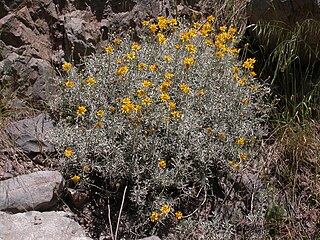
Eriophorum is a genus of flowering plants in the family Cyperaceae, the sedge family. They are found in the cool temperate, alpine, and Arctic regions of the Northern Hemisphere, primarily in the middle latitudes of North America, Europe, and Asia.

Tiarella, the foamflowers, is a genus of flowering plants in the family Saxifragaceae. The generic name Tiarella means "little turban", which suggests the shape of the seed capsules. Worldwide there are seven species, one each in eastern Asia and western North America, plus five species in eastern North America. As of October 2022, the taxonomy of Tiarella in eastern North America is in flux.

Alvan Wentworth Chapman was an American physician and pioneering botanist in the study of flora of the American Southeast. He wrote Flora of the Southern United States, the first comprehensive description of U.S. plants in any region beyond the northeastern states.

Trillium rugelii is a species of flowering plant in the family Melanthiaceae. It is endemic to the southeastern United States. Its white flower is typically found nodding beneath the leaves, hence it is known as the southern nodding trillium. The specific epithet rugelii honors Ferdinand Rugel, a botanist and plant collector who collected plant specimens throughout the southeastern U.S. during the period 1840–1848. Although the species is apparently secure across its range, statewide it is vulnerable at best.

Tiarella trifoliata, the three-leaf foamflower, is a species of flowering plant in the family Saxifragaceae. The specific name trifoliata means "having three leaflets", a characteristic of two of the three recognized varieties. Also known as the laceflower or sugar-scoop, the species is found in shaded, moist woods in western North America.

Senecio antandroi is a species of the genus Senecio endemic to Madagascar.

Senecio adenotrichius is a species of the genus Senecio. It is native to Chile, and common on disturbed land there.

Senecio chilensis is a species of the genus Senecio, family Asteraceae and one of the many species of Senecio native to Chile.

Senecio fremontii, the dwarf mountain ragwort, is a species of the family Asteraceae. It takes its scientific name from John C. Frémont.

Kleinia petraea is a species of flowering plant in the genus Kleinia and family Asteraceae which was previously considered to be a species of Senecio. Native to Kenya and Tanzania, it is colloquially known as creeping jade, trailing jade or weeping jade due to its resemblance to the unrelated Jade plant.

Senecio murorum is a species of flowering plant in the genus Senecio and family Asteraceae.

Curio repens is a species of succulent groundcover plant in the genus Curio, in the Asteraceae family. Commonly named blue chalksticks, blue chalk fingers and also snake ragwort, it is frequently used in Mediterranean climate landscaping and as an ornamental plant.

Orbexilum, commonly called leather-root, is a genus of flowering plants in the legume family (Fabaceae). They are native to North America, where they are found in the United States and Mexico, south to Chiapas.

Plantago rugelii is an edible species of flowering plant in the plantain family, Plantaginaceae. It is native to North America, where it occurs in eastern Canada and the central and eastern United States. Its common names include American plantain, blackseed plantain, and pale plantain. The specific epithet rugelii honors Ferdinand Rugel, a botanist and plant collector who collected plant specimens throughout the southeastern United States during the period 1840–1848.

Cardamine angustata is a perennial forb native to the eastern United States, that produces white to pink or purple flowers in early spring.

Arisaema quinatum is a species of flowering plant in the arum family Araceae. It is a member of the Arisaema triphyllum complex, a group of closely related taxa in eastern North America. The specific name quinatum means "divided into five lobes", a reference to its characteristic leaves. It is commonly known as the southern Jack-in-the-pulpit but some refer to it as Preacher John.

Lithospermum tuberosum, commonly called the southern stoneseed or tuberous stoneseed, is a species of flowering plant in the forget-me-not family. It is native to the Southeastern United States, where it is found in calcareous woodlands.

Symphyotrichum potosinum is a species of flowering plant in the family Asteraceae native to Mexico and the U.S. state of Arizona. Commonly known as Santa Rita Mountain aster, it is a perennial, herbaceous plant that may reach heights of 15 to 45 centimeters.

Lucy Adeline Briggs was an American watercolor botanical artist and botanical collector.
Ferdinand Ignatius Xavier Rugel was a German-born American pharmacist, botanist, and plant collector.




















